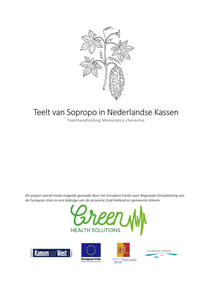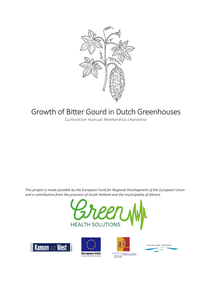The exploitation of the metagenome for novel biocatalysts by functional screening is determined by the ability to express the respective genes in a surrogate host. The probability of recovering a certain gene thereby depends on its abundance in the environmental DNA used for library construction, the chosen insert size, the length of the target gene, and the presence of expression signals that are functional in the host organism. In this paper, we present a set of formulas that describe the chance of isolating a gene by random expression cloning, taking into account the three different modes of heterologous gene expression: independent expression, expression as a transcriptional fusion and expression as a translational fusion. Genes of the last category are shown to be virtually inaccessible by shotgun cloning because of the low frequency of functional constructs. To evaluate which part of the metagenome might in this way evade exploitation, 32 complete genome sequences of prokaryotic organisms were analysed for the presence of expression signals functional in E. coli hosts, using bioinformatics tools. Our study reveals significant differences in the predicted expression modes between distinct taxonomic groups of organisms and suggests that about 40% of the enzymatic activities may be readily recovered by random cloning in E. coli.
DOCUMENT
Carnitine/choline acyltransferases play diverse roles in energy metabolism and neuronal signalling. Our knowledge of their evolutionary relationships, important for functional understanding, is incomplete. Therefore, we aimed to determine the evolutionary relationships of these eukaryotic transferases. We performed extensivephylogenetic and intron position analyses. We found that mammalian intramitochondrial CPT2 is most closely related to cytosolic yeast carnitine transferases (Sc-YAT1 and 2), whereas the other members of the family are related to intraorganellar yeast Sc-CAT2. Therefore, the cytosolically active CPT1 more closely resembles intramitochondrial ancestors than CPT2. The choline acetyltransferase is closely related to carnitine acetyltransferase and shows lower evolutionary rates than long chain acyltransferases. In the CPT1 family several duplications occurred during animal radiation, leading to the isoforms CPT1A, CPT1B and CPT1C. In addition, we found five CPT1-like genes in Caenorhabditis elegans that strongly group to the CPT1 family. The long branch leading to mammalian brain isoform CPT1C suggests that either strong positive or relaxed evolution has taken place on this node. The presented evolutionary delineation of carnitine/choline acyltransferases adds to current knowledge on their functions and provides tangible leads for further experimental research.
DOCUMENT

Muscle fiber-type specific expression of UCP3-protein is reported here for the firts time, using immunofluorescence microscopy
DOCUMENT

Understanding taste is key for optimizing the palatability of seaweeds and other non-animal-based foods rich in protein. The lingual papillae in the mouth hold taste buds with taste receptors for the five gustatory taste qualities. Each taste bud contains three distinct cell types, of which Type II cells carry various G protein-coupled receptors that can detect sweet, bitter, or umami tastants, while type III cells detect sour, and likely salty stimuli. Upon ligand binding, receptor-linked intracellular heterotrimeric G proteins initiate a cascade of downstream events which activate the afferent nerve fibers for taste perception in the brain. The taste of amino acids depends on the hydrophobicity, size, charge, isoelectric point, chirality of the alpha carbon, and the functional groups on their side chains. The principal umami ingredient monosodium l-glutamate, broadly known as MSG, loses umami taste upon acetylation, esterification, or methylation, but is able to form flat configurations that bind well to the umami taste receptor. Ribonucleotides such as guanosine monophosphate and inosine monophosphate strongly enhance umami taste when l-glutamate is present. Ribonucleotides bind to the outer section of the venus flytrap domain of the receptor dimer and stabilize the closed conformation. Concentrations of glutamate, aspartate, arginate, and other compounds in food products may enhance saltiness and overall flavor. Umami ingredients may help to reduce the consumption of salts and fats in the general population and increase food consumption in the elderly.
MULTIFILE

Publicatie bij de rede, uitgesproken bij de aanvaarding van het ambt als lector Green Biotechnology aan Hogeschool Inholland te Amsterdam op 20 mei2015 door dr. C.M. Kreike
DOCUMENT

Sopropo wordt ook wel bitter gourd, balsempeer, karela of bittermeloen genoemd en is lid van de komkommerfamilie (Cucurbitaceae). Het is een eenhuizige, eenjarige, snelgroeiende en kruidachtige klimplant. De gerimpelde vrucht van de bitter gourd wordt in Azië, Oost-Afrika, Zuid-Amerika en India geconsumeerd als groente en medicijn. Alhoewel de sopropo nog niet bekend is in de Nederlandse keuken, kan dit zeker een aanwinst zijn in de huidige trend om voeding te gebruiken als medicijn. Het doel van deze teelthandleiding van sopropo is het toegankelijk maken van deze teelt voor Nederlandse telers en op deze wijze te kunnen voldoen aan de marktvraag. Daarnaast heeft deze teelthandleiding als doel inzicht te geven in de gestandaardiseerde productie van de medicinale inhoudsstoffen in de vrucht.
DOCUMENT

Bitter gourd is also called sopropo, balsam-pear, karela or bitter melon and is a member of the cucumber family (Cucurbitaceae). It is a monoecious, annual, fast-growing and herbaceous creeping plant. The wrinkled fruit of the bitter gourd is consumed as a vegetable and medicine in Asia, East Africa, South America and India. The aim of this bitter gourd cultivation manual is to make this cultivation accessible to Dutch growers and in this way be able to meet market demand. In addition, this cultivation manual aims to provide insight into the standardized production of the medicinal ingredients in the fruit.
DOCUMENT

BackgroundThe ROS1 G2032R mutation is the most common on-target resistance mutation in crizotinib treated ROS1-positive lung cancer patients. The aim of our study was to investigate resistance mechanisms in SCL34A2-ROS1G2032R positive Ba/F3 cells against second line treatment with lorlatinib.MethodsBa/F3 SLC34A2-ROS1G2032R cells were subjected to N-ethyl-N-nitrosourea (ENU) mutagenesis and clones were selected upon treatment with 1000 nM lorlatinib for 4 weeks. Resistant clones were analyzed for presence of on-target resistant mutations using Sanger sequencing. In addition, we generated subclones expressing SLC34A2-ROS1L2026M+G2032R and SLC34A2-ROS1L2026M in Ba/F3 cells. Sensitivity to ROS1 TKIs was determined by measuring cell viability and ROS1 phosphorylation. Molecular Dynamic simulations of the ATP binding pocket were performed for all ROS1 variants.ResultsThe ENU-screen of 41 lorlatinib resistant clones revealed one with a mutation in the kinase domain: L2026M. Cell viability assays of the ENU-induced resistant cell line and the Ba/F3 cells transfected with the mutant SCL34A2-ROS1 fusion gene constructs revealed a decreased sensitivity of SLC34A2-ROS1L2026M+G2032R cells for lorlatinib, crizotinib, entrectinib and repotrectinib compared to the single mutants. Consistent with these findings, we observed phosphorylation of ROS1 fusion protein in the double mutant cells which was not inhibited upon treatment with ROS1 TKIs. The single mutant cells showed as expected a clear reduction in phosphorylated ROS1 fusion protein . Molecular modeling to unravel the effect of the mutations demonstrated that the volume of the ATP-binding pocket was reduced in single and double mutants compared to wild type. The double L2026M+G2032R mutant displayed the smallest pocket.ConclusionsWe identified a novel on-target mutation after inducing lorlatinib resistance in SLC34A2-ROS1G2032R Ba/F3 cells. This SLC34A2-ROS1L2026M+G2032R cell line was also resistant to crizotinib, entrectinib and repotrectinib. The resistance can be explained by a smaller ATP binding pocket in the mutated ROS1 fusion protein preventing effective binding of the investigated TKIs.
DOCUMENT
From teh UU repository: "Background: Oral immunotherapy (OIT) is a promising therapeutic approach to treat food allergic patients. However, there are some concerns regarding its safety and long-term efficacy. The use of non-digestible oligosaccharides might improve OIT efficacy since they are known to directly modulate intestinal epithelial and immune cells in addition to acting as prebiotics. Aim: To investigate whether a diet supplemented with plant-derived fructo-oligosaccharides (FOS) supports the efficacy of OIT in a murine cow's milk allergy model and to elucidate the potential mechanisms involved. Methods: After oral sensitization to the cow's milk protein whey, female C3H/HeOuJ mice were fed either a control diet or a diet supplemented with FOS (1% w/w) and received OIT (10 mg whey) 5 days a week for 3 weeks by gavage. Intradermal (i.d.) and intragastric (i.g.) challenges were performed to measure acute allergic symptoms and mast cell degranulation. Blood and organs were collected to measure antibody levels and T cell and dendritic cell populations. Spleen-derived T cell fractions (whole spleen-and CD25-depleted) were transferred to naive recipient mice to confirm the involvement of regulatory T cells (Tregs) in allergy protection induced by OIT + FOS. Results: OIT + FOS decreased acute allergic symptoms and mast cell degranulation upon challenge and prevented the challenge-induced increase in whey-specific IgE as observed in sensitized mice. Early induction of Tregs in the mesenteric lymph nodes (MLN) of OIT + FOS mice coincided with reduced T cell responsiveness in splenocyte cultures. CD25 depletion in OIT + FOS-derived splenocyte suspensions prior to transfer abolished protection against signs of anaphylaxis in recipients. OIT + FOS increased serum galectin-9 levels. No differences in short-chain fatty acid (SCFA) levels in the cecum were observed between the treatment groups. Concisely, FOS supplementation significantly improved OIT in the acute allergic skin response, %Foxp3+ Tregs and %LAP+ Th3 cells in MLN, and serum galectin-9 levels. Conclusion: FOS supplementation improved the efficacy of OIT in cow's milk allergic mice. Increased levels of Tregs in the MLN and abolished protection against signs of anaphylaxis upon transfer of CD25-depleted cell fractions, suggest a role for Foxp3+ Tregs in the protective effect of OIT + FOS. "
LINK
What options are open for peoplecitizens, politicians, and other nonscientiststo become actively involved in and anticipate new directions in the life sciences? In addressing this question, this article focuses on the start of the Human Genome Project (1985-1990). By contrasting various models of democracy (liberal, republican, deliberative), I examine the democratic potential the models provide for citizens' involvement in setting priorities and funding patterns related to big science projects. To enhance the democratizing of big science projects and give citizens opportunities to reflect, anticipate, and negotiate on newdirections in science and technology at a global level, liberal democracy with its national scope and representative structure does not suffice. Although republican (communicative) and deliberative (associative) democracy models meet the need for greater citizen involvement, the ways to achieve the ideal at a global level still remain to be developed.
DOCUMENT
